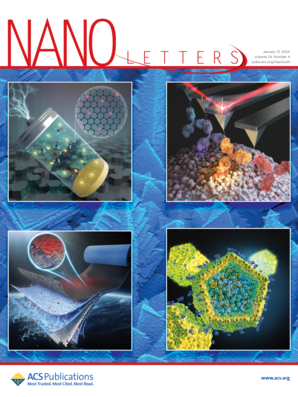Full Electrical Manipulation of Perpendicular Magnetization in [111]-Orientated Pt/Co Heterostructure Enabled by Anisotropic Epitaxial Strain
IF 9.6
1区 材料科学
Q1 CHEMISTRY, MULTIDISCIPLINARY
引用次数: 0
Abstract
The effective manipulation of perpendicular magnetization through spin–orbit torque (SOT) holds great promise for magnetic memory and spin-logic device. However, field-free SOT switching of perpendicular magnetization remains a challenge for conventional materials with high symmetry. This study elucidates a full electrical manipulation of the perpendicular magnetization in an epitaxial [111]-orientated Pt/Co heterostructure. A large anisotropic epitaxial strain induces a symmetry transition from the ideal C3v to C1v, attributed to the mismatch between [112] and [110] directions. The anisotropic strain also generates a noteworthy in-plane magnetization component along the [112] direction, further breaking magnetic symmetry. Notably, the high-temperature performance under 393 K highlights the robustness of strain-induced in-plane symmetry breaking. Furthermore, eight Boolean logic operations have been demonstrated within a single SOT device. This research presents a method for harnessing epitaxial strain to break in-plane symmetry, which may open a new avenue in practical SOT devices.

求助全文
约1分钟内获得全文
求助全文
来源期刊

Nano Letters
工程技术-材料科学:综合
CiteScore
16.80
自引率
2.80%
发文量
1182
审稿时长
1.4 months
期刊介绍:
Nano Letters serves as a dynamic platform for promptly disseminating original results in fundamental, applied, and emerging research across all facets of nanoscience and nanotechnology. A pivotal criterion for inclusion within Nano Letters is the convergence of at least two different areas or disciplines, ensuring a rich interdisciplinary scope. The journal is dedicated to fostering exploration in diverse areas, including:
- Experimental and theoretical findings on physical, chemical, and biological phenomena at the nanoscale
- Synthesis, characterization, and processing of organic, inorganic, polymer, and hybrid nanomaterials through physical, chemical, and biological methodologies
- Modeling and simulation of synthetic, assembly, and interaction processes
- Realization of integrated nanostructures and nano-engineered devices exhibiting advanced performance
- Applications of nanoscale materials in living and environmental systems
Nano Letters is committed to advancing and showcasing groundbreaking research that intersects various domains, fostering innovation and collaboration in the ever-evolving field of nanoscience and nanotechnology.
 求助内容:
求助内容: 应助结果提醒方式:
应助结果提醒方式:


